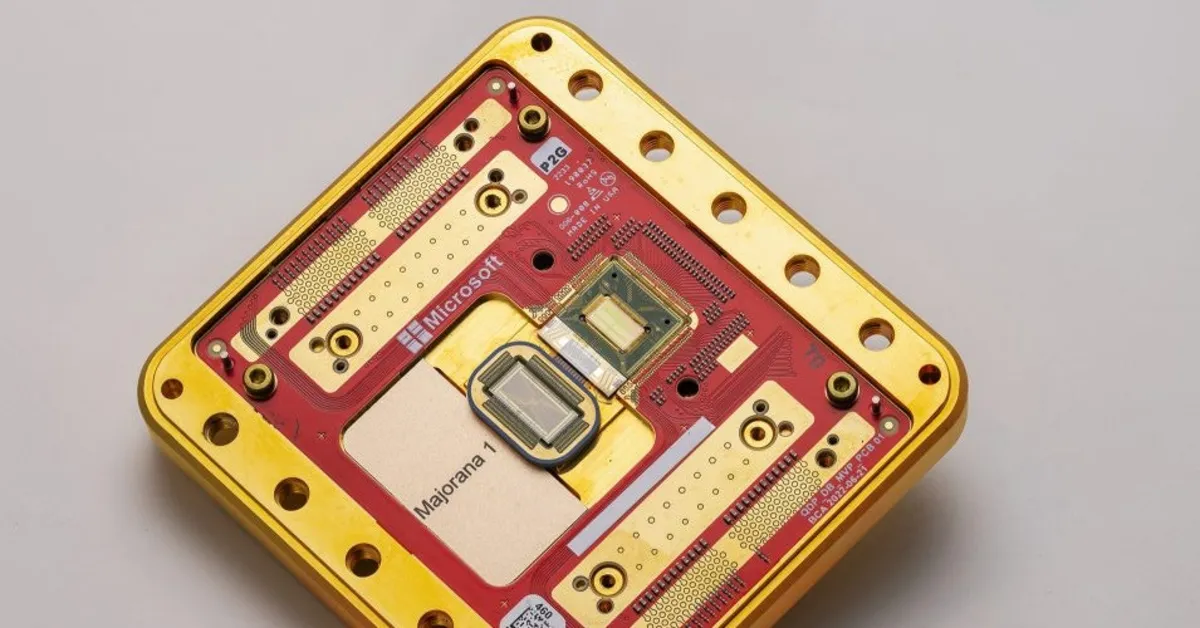
Researchers at Microsoft have made a groundbreaking announcement regarding the creation of the first “topological qubits” in a device that stores information in an exotic state of matter. This development is being hailed as a potential significant breakthrough in the field of quantum computing.
In tandem with this announcement, the researchers have published a paper in Nature along with a detailed “road map” outlining further work. The design of the Majorana 1 processor is projected to accommodate up to a million qubits. This capability could enable the realization of numerous significant goals for quantum computing, such as cracking cryptographic codes and accelerating the design of new drugs and materials.
If Microsoft's claims are validated, the company may have surpassed competitors like IBM and Google, who are currently leading the race to build a functional quantum computer. However, the peer-reviewed Nature paper only partially supports the researchers' claims, and the road map indicates several challenging hurdles still need to be overcome. Although the Microsoft press release showcases what is purported to be quantum computing hardware, independent confirmation of its capabilities is still lacking. Nonetheless, the news from Microsoft is promising and generates excitement within the scientific community.
This announcement raises several questions: What exactly is a topological qubit? What is a qubit, for that matter? And why is there such a strong desire for quantum computers?
The concept of quantum computers first emerged in the 1980s. Unlike ordinary computers, which store information in bits, a quantum computer uses quantum bits—or qubits. An ordinary bit holds a value of 0 or 1, but a quantum bit, governed by the laws of quantum mechanics, can exist in a combination of both states. Imagine a regular bit as an arrow pointing up or down, whereas a qubit is an arrow that can point in any direction, known as a “superposition” of up and down.
This capability makes a quantum computer much faster than a traditional computer for certain types of calculations, particularly those involving code-breaking and simulating natural systems. However, constructing real qubits and extracting information from them is extremely challenging, as interactions with the external environment can obliterate the delicate quantum states.
Microsoft has adopted a novel strategy by focusing on topological qubits. They utilize Majorana particles, first theorized in 1937 by Italian physicist Ettore Majorana. Majorana particles are not naturally occurring like electrons or protons; they exist in a rare material called a topological superconductor, which requires advanced material design and extremely low temperatures.
Typically studied in academic settings rather than practical applications, Majorana particles have been harnessed by the Microsoft team using a pair of tiny wires, each trapping a Majorana particle at either end to function as a qubit. The qubit's value, expressed by whether an electron is in one wire or the other, is measured using microwaves.
Microsoft's significant effort is justified by the potential benefits of braiding Majorana particles by swapping their positions or measuring them in specific ways. This technique enables the qubits to be measured without error and makes them resistant to external interference. This “topological” aspect of topological qubits suggests that a quantum computer constructed with Majorana particles can be free of the qubit errors that plague other designs.
This explains Microsoft's seemingly laborious approach. Other technologies are more error-prone, requiring hundreds of physical qubits to produce a single reliable “logical qubit”. Microsoft has focused its time and resources on developing Majorana-based qubits, hoping to quickly catch up despite joining the quantum race later.
However, as with all breakthroughs, there are challenges. Even with a Majorana-based quantum computer, one operation—known as T-gate—cannot be achieved without errors. Thus, the Majorana-based quantum chip is only “almost error-free.” Nevertheless, correcting T-gate errors is significantly simpler than addressing general error correction in other quantum platforms.